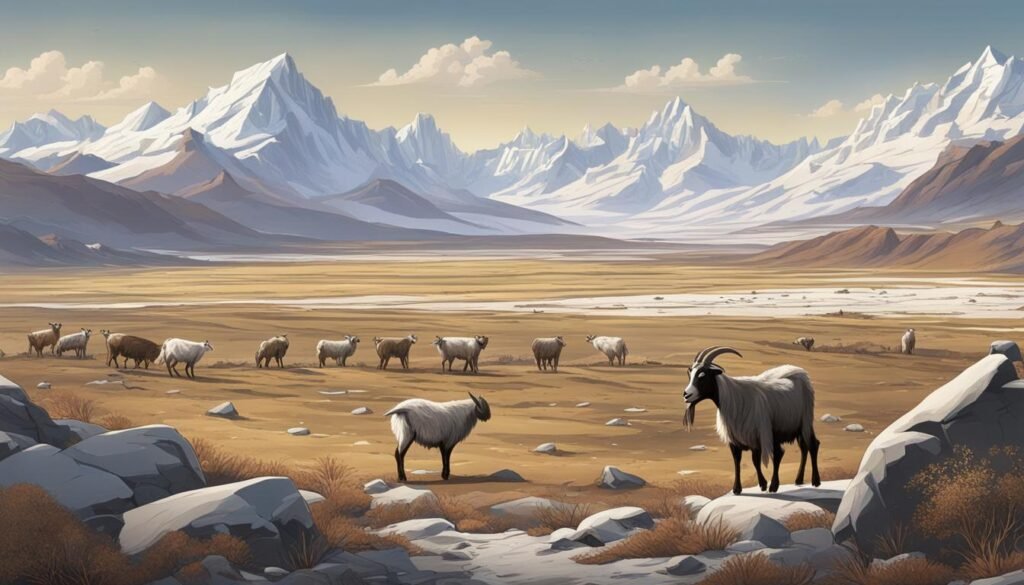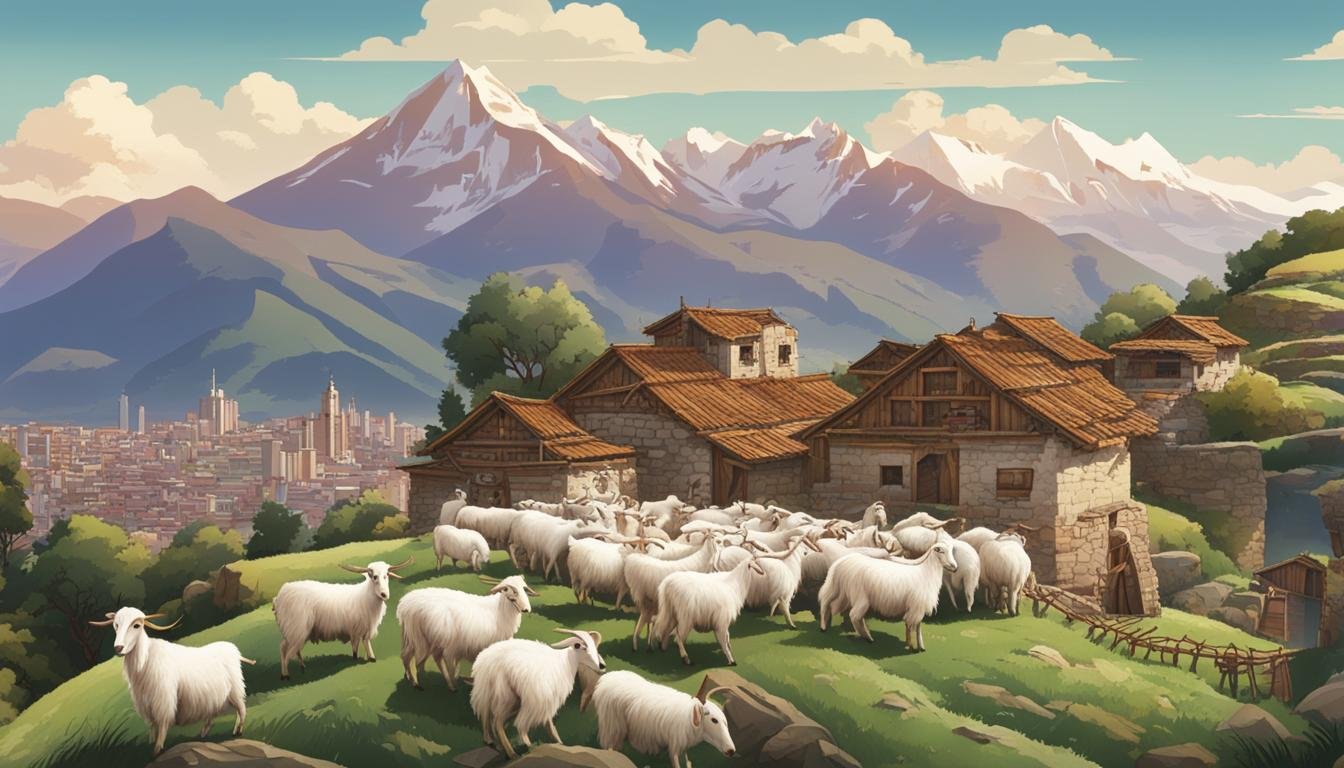Cashmere, the epitome of luxury and sophistication in the fashion world. We all know it feels incredibly soft and keeps us warm during those chilly winter months. But have you ever wondered why cashmere comes with such a hefty price tag? Let’s delve into the factors that contribute to the high cost of this coveted fabric.
First and foremost, cashmere goats, mainly found in China and Mongolia, play a significant role in the limited supply of cashmere. These remarkable animals produce a minuscule amount of cashmere fiber each year, making it a rare and finite resource. The fibers are collected during the natural moulting season in spring, resulting in a small quantity available for production.
Furthermore, the hollow structure of cashmere fibers adds to its luxurious appeal. This unique feature allows for exceptional thermoregulation, making cashmere garments highly sought-after in the fashion industry. The softness, warmth, and comfort offered by cashmere are unparalleled, making it a preferred choice for those who value both style and functionality.
Key Takeaways:
- Cashmere’s high price is due to factors like limited supply and exquisite qualities.
- Cashmere goats produce a small amount of fiber per year, making it rare and precious.
- The hollow structure of cashmere fibers contributes to excellent thermoregulation.
- Softness, warmth, and comfort make cashmere a preferred luxury fabric.
- Cashmere’s high cost reflects its exclusivity and exceptional characteristics.
Cashmere Production Process: From Goat to Garment
The production of cashmere involves multiple steps to transform the raw goat wool into luxurious garments. Cashmere goats, known for their high-quality wool, have two layers of hair – a thick wiry guard hair and a super-soft cashmere undercoat. The cashmere fiber is sourced from the soft undercoat, which is carefully collected once a year during the natural moulting season. This ensures that the fiber is at its finest and softest state.
After collection, the raw cashmere undergoes a thorough process to remove grease, dirt, and thicker hairs. This refining process reduces the usable weight of the cashmere, resulting in a limited quantity available for production. The collected cashmere is then dyed using various techniques to achieve desired colors, enhancing its appeal in the market.
Next, the cashmere is meticulously aerated, ensuring that it maintains its softness and quality. The fibers are delicately processed, avoiding any damage or loss of their natural properties. This careful handling ensures that the resulting cashmere yarn is of the highest quality.
The Warmth and Comfort of Cashmere
Cashmere is renowned for its exceptional warmth and comfort. The soft and lightweight nature of cashmere fibers, along with their hollow structure, provides excellent thermal insulation. This means that cashmere garments can keep the wearer warm in cold temperatures while still allowing the skin to breathe. Cashmere’s unique ability to absorb moisture ensures that it remains cozy and dry, making it an ideal choice for winter clothing. The demand for cashmere stems from its luxurious feel and superior warmth, leading to its high market value in the fashion industry.
When it comes to expensive clothing materials, cashmere holds a special place due to its unparalleled warmth and comfort. The softness of cashmere fibers against the skin creates a luxurious experience that is hard to replicate with other fabrics. Cashmere’s lightweight nature allows for effortless layering without compromising on insulation. This makes it a popular choice for sweaters, scarves, and accessories that provide both style and warmth.
Experience the Luxurious Feel
“When you wear cashmere, you can feel the quality and craftsmanship that goes into each piece. The warmth and comfort are unparalleled, making it a worthwhile investment for those who appreciate luxury fashion.”
The demand for cashmere is driven by its desirable properties. Its warmth-to-weight ratio is higher than that of traditional wool, making it a practical choice for colder climates. Additionally, cashmere has a natural elasticity that allows it to retain its shape even after repeated wear. This durability, combined with its softness and comfort, makes cashmere a long-lasting and worthwhile investment.
Choosing Quality and Sustainability
When purchasing cashmere garments, it is important to consider the quality and sustainability of the product. Look for reputable brands that prioritize ethical sourcing and production. Opting for certified sustainable cashmere ensures that the fibers are obtained responsibly and from goats that are treated humanely. By supporting sustainable practices, you can enjoy the luxurious warmth of cashmere while minimizing your environmental impact.
In conclusion, cashmere’s warmth and comfort make it a highly sought-after fabric in the fashion industry. Its unique properties, including exceptional insulation and moisture absorption, contribute to its high market value. When choosing cashmere, prioritize quality, sustainability, and ethical sourcing to ensure a luxurious experience that will stand the test of time.
The Rarity and Limited Supply of Cashmere
Cashmere’s high price can be attributed to its rarity and limited supply. Cashmere production represents only 0.5% of the world’s total wool production, with the majority sourced from the Himalayas, China, and Mongolia. The limited amount of cashmere each goat produces, combined with the fact that collection can only occur once a year, contributes to its scarcity. It takes the wool from several goats to create just one cashmere coat, making it a precious and coveted material. The rarity of cashmere, along with its luxurious qualities, drives up its market value.
As a result of its limited supply, cashmere is highly sought after in the fashion industry. It is considered a luxury material and is often associated with high-end brands and exclusive collections. The scarcity of cashmere adds to its appeal and exclusivity, making it a symbol of wealth and sophistication. The demand for cashmere remains strong despite its high price, as consumers value its exceptional softness, warmth, and quality.
To meet the growing demand, some brands have turned to alternative materials or blended fabrics that mimic the properties of cashmere at a lower cost. However, these alternatives cannot fully replicate the luxurious look and feel of genuine cashmere. The scarcity and limited supply of cashmere will continue to contribute to its high market value, ensuring that it remains a prized and cherished fabric in the fashion world.

The Rise of Cheaper Cashmere Alternatives
In recent years, the demand for cashmere has skyrocketed, leading to a surge in prices for this luxurious fabric. As a result, cheaper cashmere alternatives have gained popularity among consumers who seek the softness and luxury of cashmere at a more affordable price. These alternatives often utilize a lower grade of cashmere or employ different processing methods to reduce costs.
However, it is important for consumers to be cautious when purchasing these cheaper alternatives, as there have been reports of mislabeling and the inclusion of other materials. Some supposedly 100% cashmere products have been found to contain yak hair or even rat fur. To ensure the authenticity and quality of their cashmere garments, consumers should choose reputable sources and be aware of significantly lower prices that may indicate a counterfeit product.
Despite the rise of these cheaper alternatives, it is crucial to note that even they are typically more expensive than traditional wool garments. Cashmere remains a highly sought-after material in the fashion industry due to its exceptional softness, warmth, and comfort. Its demand continues to outstrip its limited supply, driving up its market value and cementing its status as one of the most expensive clothing materials.
Conclusion
Cashmere, with its rarity and exceptional qualities, continues to be a sought-after material in the luxury fashion industry. Its high price tag is justified by the limited supply, intensive labor involved in processing, and the demand for expensive clothing materials.
As one of the most expensive clothing materials, cashmere holds a special place in the hearts of fashion enthusiasts. Its softness, warmth, and comfort make it a preferred choice for those seeking luxurious garments.
However, consumers must be cautious of counterfeit products and choose reputable sources when purchasing cashmere. The rise of cheaper cashmere alternatives has made it more accessible, but it’s important to ensure authenticity and quality. With its enduring popularity, cashmere remains a symbol of elegance and luxury in the fashion world.
FAQ
Why is cashmere so expensive?
Cashmere is a luxury fabric known for its softness and warmth, and its high price tag can be attributed to several factors. Cashmere goats produce a limited amount of cashmere fiber each year, making it a rare and finite resource. Additionally, the hollow structure of cashmere fibers allows for exceptional thermo-regulation, making it a sought-after material in the luxury fashion industry.
How is cashmere produced?
Cashmere production involves sourcing the soft undercoat of cashmere goats, which is collected once a year during the natural moulting season. The collected cashmere is then processed to remove grease, dirt, and thicker hairs. It is then dyed, aerated, and delicately processed to maintain its softness and quality. The resulting cashmere yarn is graded based on fineness and length, with higher-quality fibers having a thinner diameter.
What makes cashmere warm and comfortable?
The soft and lightweight nature of cashmere fibers, along with their hollow structure, provides excellent thermal insulation. This means that cashmere garments can keep the wearer warm in cold temperatures while still allowing the skin to breathe. Cashmere’s unique ability to absorb moisture ensures that it remains cozy and dry, making it an ideal choice for winter clothing.
Why is cashmere rare?
Cashmere represents only 0.5% of the world’s total wool production, and the majority is sourced from the Himalayas, China, and Mongolia. Cashmere goats produce a limited amount of cashmere each year, and collection can only occur once a year during the natural moulting season. It takes the wool from several goats to create just one cashmere coat, making it a precious and coveted material.
Are there cheaper alternatives to cashmere?
Yes, there are cheaper cashmere alternatives that offer a more affordable option for consumers. These products may use a lower grade of cashmere or different processing methods to reduce costs while still providing a similar level of softness and luxury. However, it is important to note that even these cheaper alternatives are typically still more expensive than traditional wool garments.
How can I ensure the authenticity and quality of cashmere garments?
When purchasing cashmere, it is important to choose reputable sources to ensure the authenticity and quality of the garments. Be cautious of significantly lower prices, as mislabeling and the inclusion of other materials have been reported in some supposedly 100% cashmere products. Look for trusted brands and retailers that have a reputation for selling genuine, high-quality cashmere.

